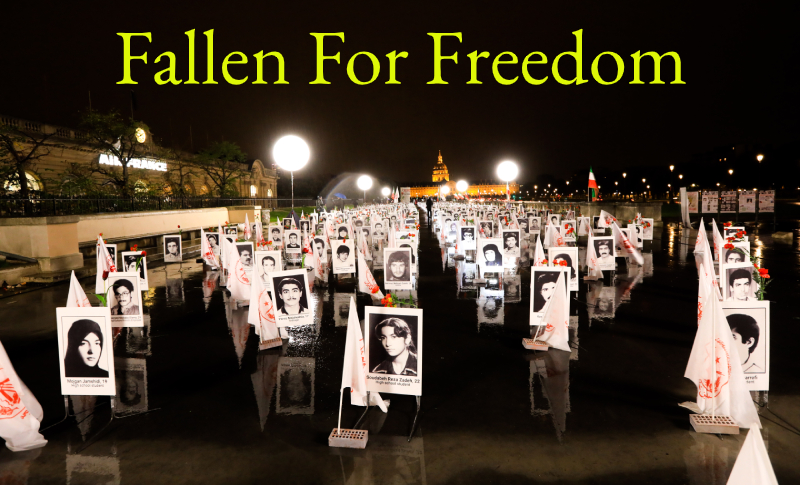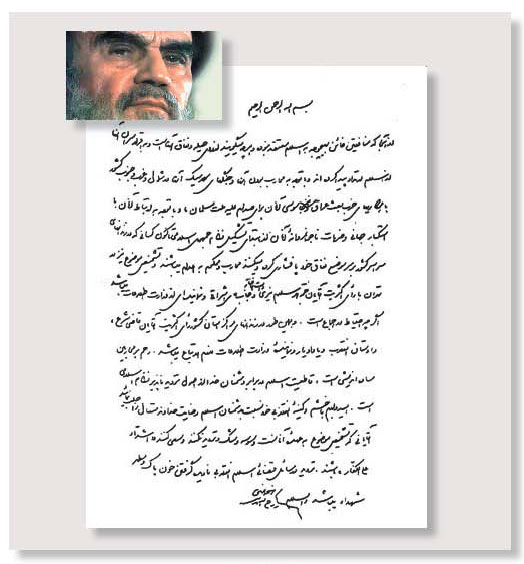
By Armin Baldwin
The Iranian regime has carried out some of the most horrific crimes in recent history during the past few decades.
A lot of these have been war crimes exercised abroad, but many of these have also been terrible crimes against the people of Iran.
During the summer of 1988, more than 30,000 political prisoners were killed during what has become known as the 1988 massacre. The Supreme Leader at that time issued a fatwa ordering the execution of all political prisoners.
Most of those that were killed were members or supporters of the People’s Mojahedin Organization of Iran (PMOI, Mujahedin-e Khalq or MEK) – the main political opposition.

Khomeini at during the summer of 1988 issued a fatwa execution, 30,000 members of the MEK,
The regime saw the opposition as a major threat to its existence back then. And it still does today. Instead of extinguishing dissent, the Iranian regime has managed to strengthen it. The opposition has grown stronger and today it remains the number one threat to its survival.
Since the remaining MEK members were safely removed from the Camp Ashraf in Iraq where they had been exiled to years ago, the Iranian Resistance has put a lot of effort into calling the international community to act. Until now, the 1988 massacre has not been widely spoken about.
In the immediate aftermath of the 1988 massacre, many countries, in particular, Western governments, had introduced policies of appeasement towards the Iranian regime. This meant that on an international level, this horrific crime against humanity was not spoken about.
However, some organizations such as Amnesty International and a number of other human rights organizations have voiced their concern about the incident for some time now. Amnesty International has drawn attention to the regime’s appalling human rights record and in particular, the 1988 massacre and the impunity the perpetrators have been enjoying for decades.
The organization has drawn attention to the circumstances surrounding the murders, and also the anguish that loved ones are still feeling all this time later. Amnesty International has emphasized that families openly seeking justice have been threatened and even jailed. Furthermore, those that were executed were buried in mass graves and the families still have no idea where the remains of their loved ones lie.

Mass graves in Iran
The NCRI and the PMOI have been instrumental in bringing light to the incident and they have gathered testimony from the courageous survivors and the suffering families that have been affected by this tragedy. The Iranian Resistance and the brave people of Iran will not give up in their quest for justice.
Seeking justice for the victims of the #1988Massacre, and for all the oppression inflicted on the people of #Iran is a nationalist commitment. It is our commitment and our steadfast resolve to achieve freedom. It is a staunch pledge to overthrow the mullahs’ theocratic regime. pic.twitter.com/FZ1w9PN3RB
— Maryam Rajavi (@Maryam_Rajavi) October 30, 2019
The Iranian regime has tried to cover its tracks and deny involvement, but the truth is out there and it cannot be ignored. Several officials that were perpetrators of the crime have even come out in recent months and defended the massacre of political prisoners.
Some of the perpetrators occupy high-level governmental posts even now. It is the international community’s responsibility, especially that of Western governments, to stand up for the people of Iran and demand justice.
Impunity has already lasted too long and it should not continue for a minute longer.
Portraits of some 800 victims of the People’s Mujahedin of Iran are put on display along the Esplanade des Invalides in Paris to commemorate the executions of thousands of Iranian political prisoners in 1988
Portraits of some 800 victims of the People’s Mujahedin of Iran are put on display along the Esplanade des Invalides in Paris to commemorate the executions of thousands of Iranian political prisoners in 1988
? Eric Feferberg pic.twitter.com/UDBIFrMWIp
— AFP news agency (@AFP) October 30, 2019







